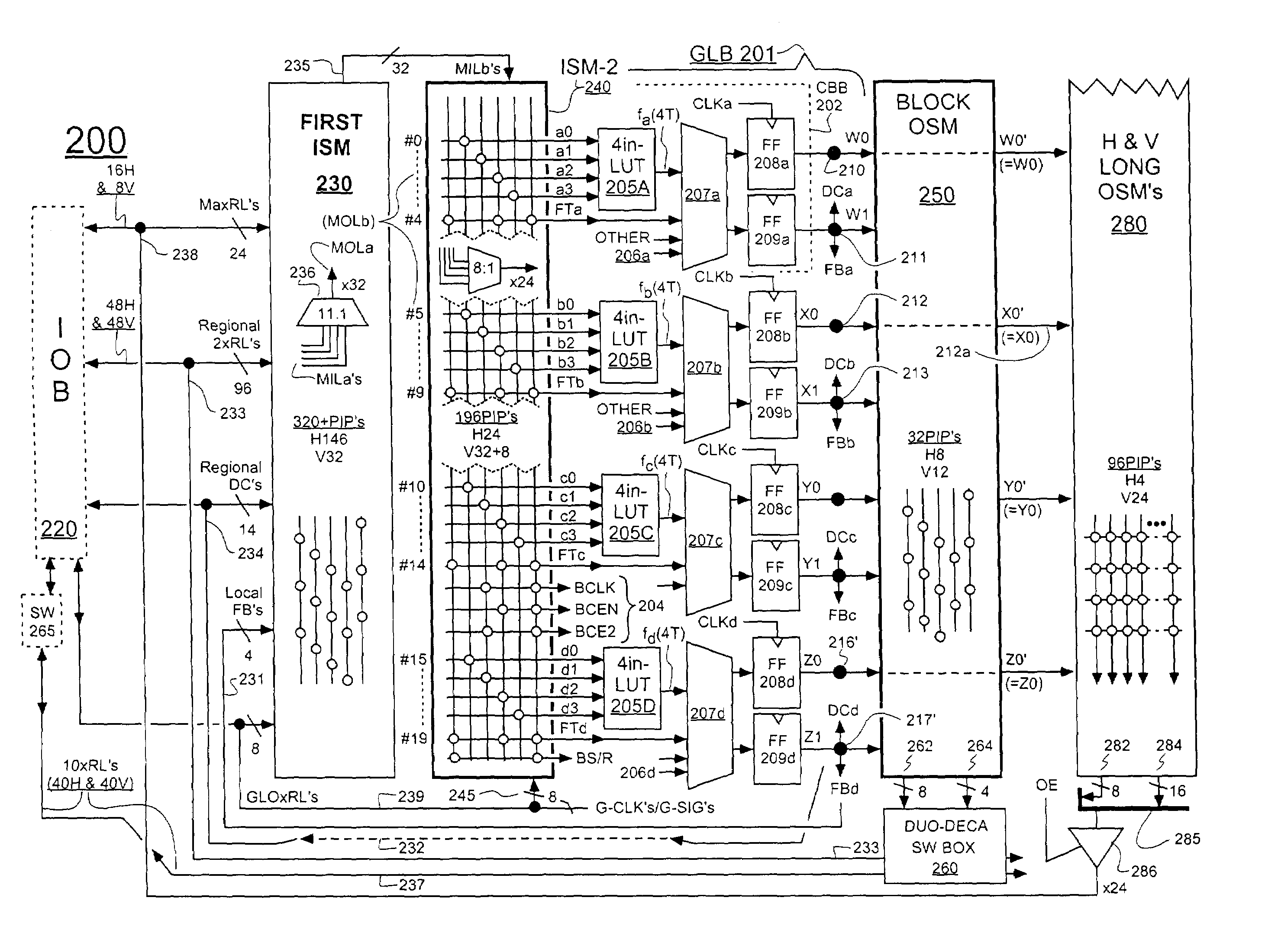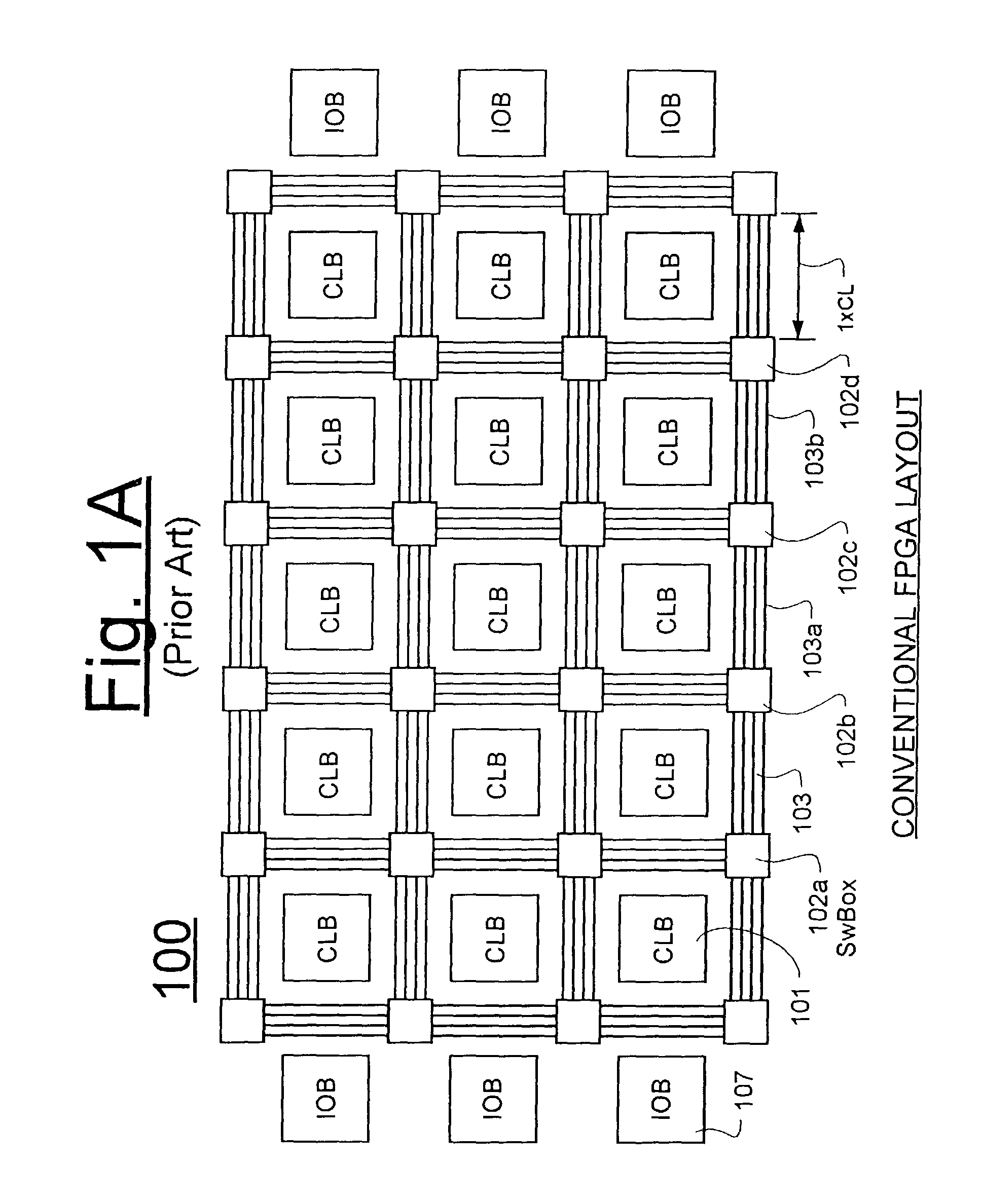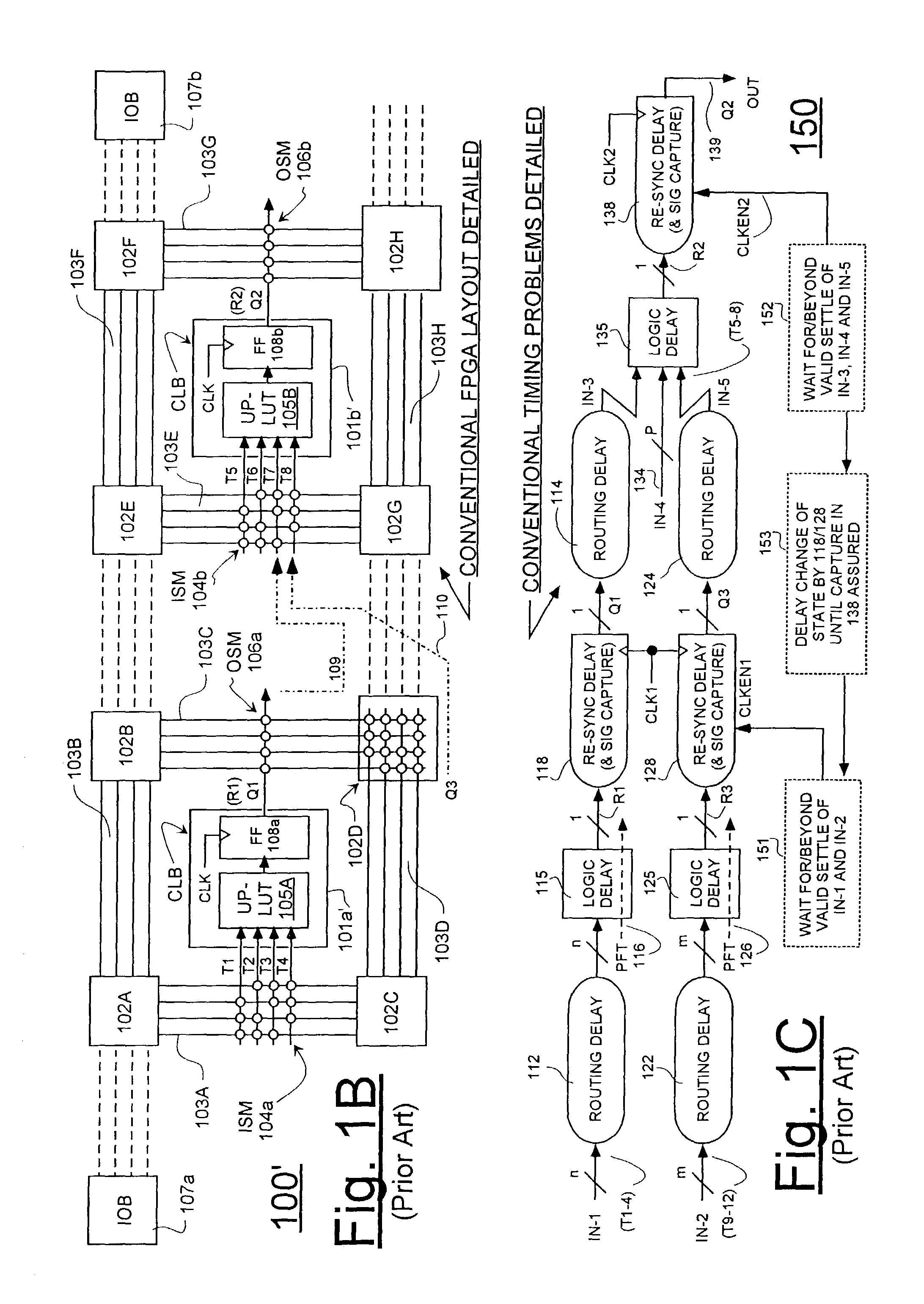FPGA with register-intensive architecture
a register-intensive architecture and register-intensive technology, applied in the field of circuits, can solve the problems of the speed and complexity of signal processing of such logics that have tended to increase with time, and achieve the effect of reducing the consumption of general interconnect resources for supporting such circuit functions, eliminating or minimizing the consumption of general interconnect resources
- Summary
- Abstract
- Description
- Claims
- Application Information
AI Technical Summary
Benefits of technology
Problems solved by technology
Method used
Image
Examples
embodiment 200
[0154]In the illustrated embodiment, the Block OSM 250 (BOSM) feeds into a so-called, duo-deca switchbox 260. The latter switchbox 260 can be user-programmed to route the BOSM's output signals 262 and 264 respectively onto duo-reach general interconnect lines (2xRL's) 233 and onto deca-reach general interconnect lines (10xRL's) 237. Additionally, the duo-deca switchbox 260 can programmably route signals between various ones of the 2xRL and 10xRL lines passing through that switchbox 260. For the given embodiment 200, the 1 xRL lines (237) do not directly connect to the multi-stage input-signals acquiring means (e.g., 230–240). Instead, signals that are to travel intermediate-length distances by way of the 10xRL lines, must use the duo-reach lines (2xRL's) of certain ones of adjacent logic tiles (see 390a–390c of FIG. 3B) essentially as entrance ramps and exit ramps for correspondingly getting onto and exiting from the deca-reach highway lines, where this entering and exiting occurs w...
embodiment 300
[0220]As can be further seen in FIG. 3A, besides the 2xRL lines and the MaxRL lines, the local FB's and DC's (301f as well as the global-reach conductors (301g) define additional, adjacent interconnect lines (AIL's) of ISM blocks such as 324. Signals from the various AIL's of a given ISM block can be selectively acquired by the ISM block (e.g., 324) and fed into the corresponding GLB (e.g., 320) for processing therein. GLB outputs may then returned to the AIL's for local continuation (e.g., via the FB's and / or DC's) and / or for general continuation (e.g., via the local duo-deca switchbox, and then through the 2xRL and / or 10xRL lines) and / or long distance continuation (e.g., via the MaxRL lines). The horizontal and vertical, longlines output switch matrices (LOSM's) are organized to service respective horizontal and vertical sequences of four GLB's each. Part of a vertical one of such sequences of GLB's is shown in FIG. 3A as dashed box 381. Part of a horizontal one of such sequences ...
embodiment 401
[0268]For purposes of continuity, ISM stages −1 and −2 are schematically represented as 401′ and 402′, respectively. The illustrated ISM-2 stage, 402′ may be the same as the 402 embodiment shown in FIG. 4A or a different embodiment that conforms with the principles of the present disclosure. Similarly, the illustrated ISM-1 stage shown at 401′ in FIG. 4B may be the same as the specific stage-1 embodiment 401 shown in FIG. 4C or another embodiment which conforms with the principles of the present disclosure.
[0269]For the specific GLB controls generator 400B′ shown in FIG. 4B, some of the generated control signals such as generally identified by 403 are common to the associated GLB 404′. Some others of the control signals such as generally identified by 405 are common to a given register pair (e.g., 408a*–409a*) of the associated GLB 404′. Yet other control signals such as generally identified by 407 are specific to the operations of a specific state-storing register (e.g., 408a*) wit...
PUM
 Login to View More
Login to View More Abstract
Description
Claims
Application Information
 Login to View More
Login to View More - R&D
- Intellectual Property
- Life Sciences
- Materials
- Tech Scout
- Unparalleled Data Quality
- Higher Quality Content
- 60% Fewer Hallucinations
Browse by: Latest US Patents, China's latest patents, Technical Efficacy Thesaurus, Application Domain, Technology Topic, Popular Technical Reports.
© 2025 PatSnap. All rights reserved.Legal|Privacy policy|Modern Slavery Act Transparency Statement|Sitemap|About US| Contact US: help@patsnap.com



